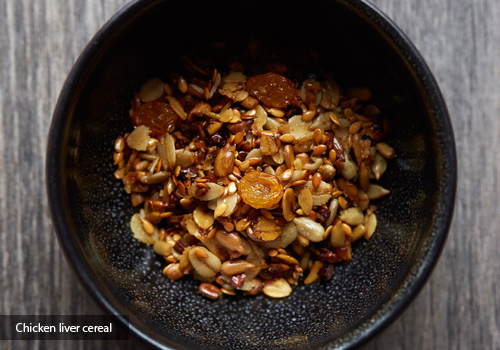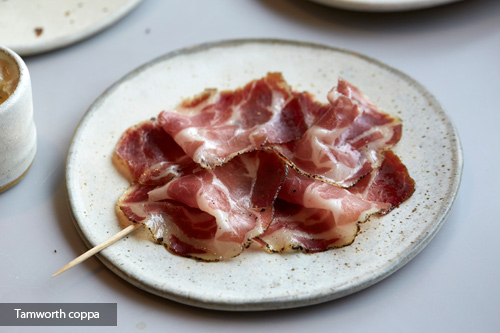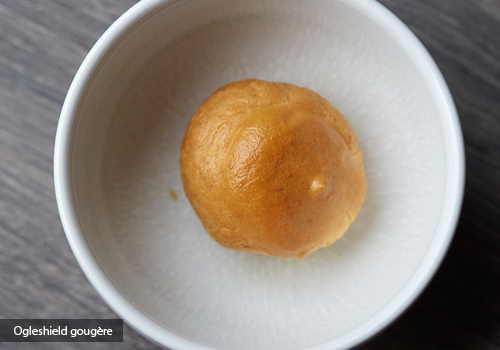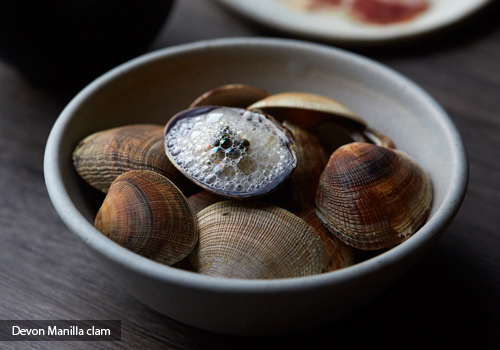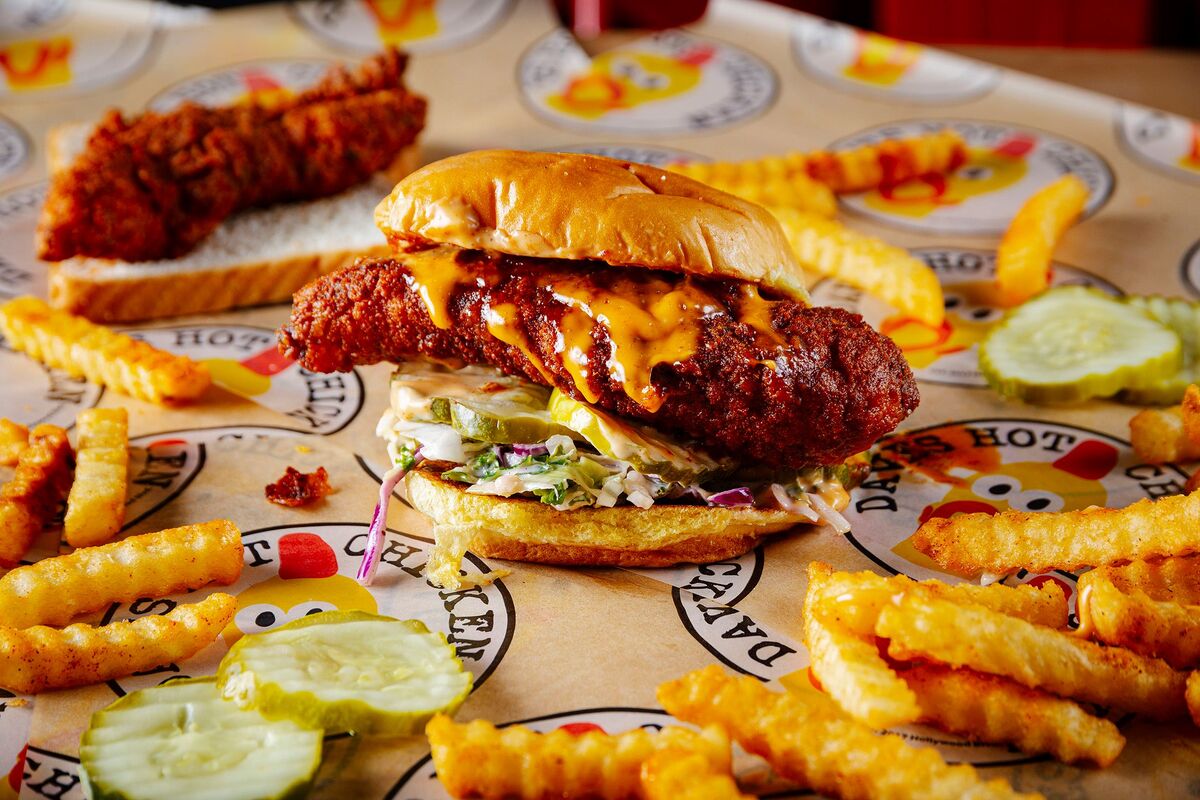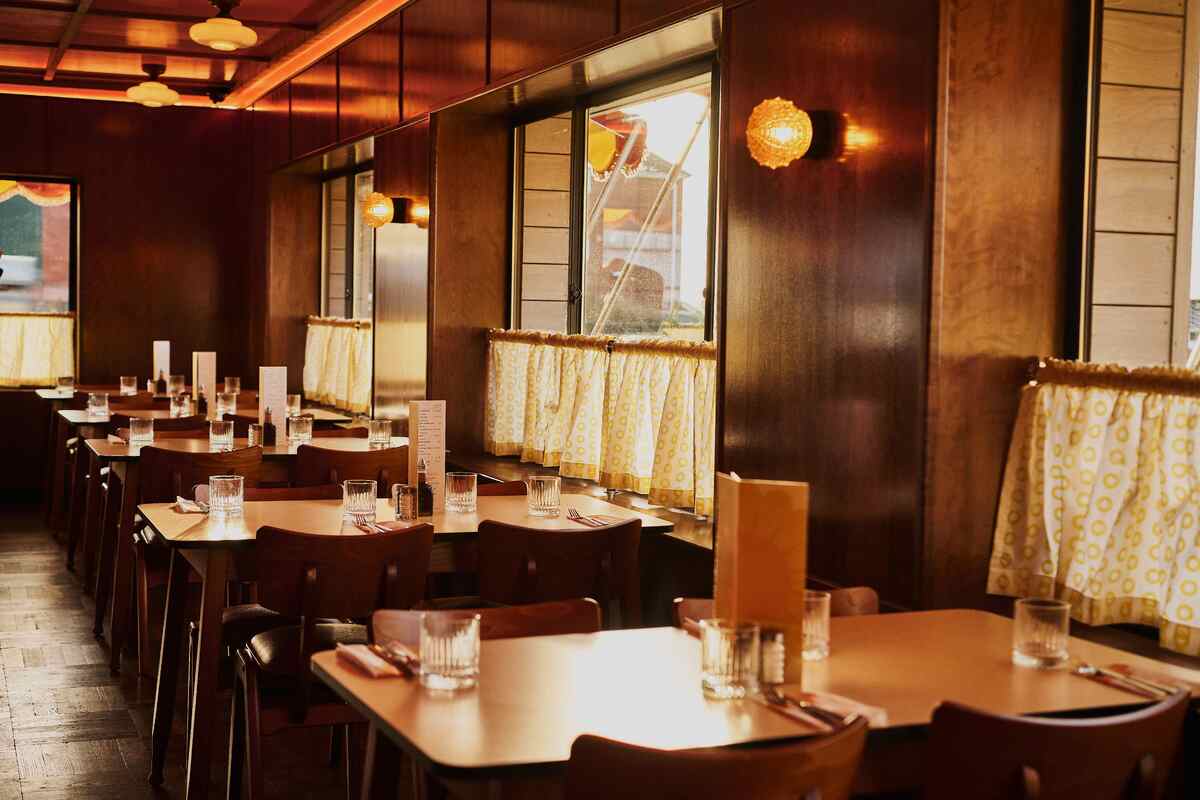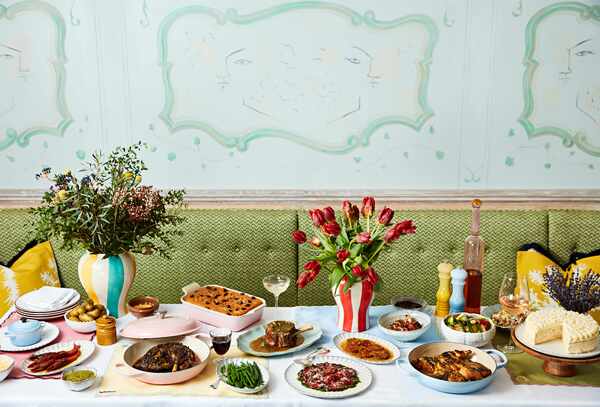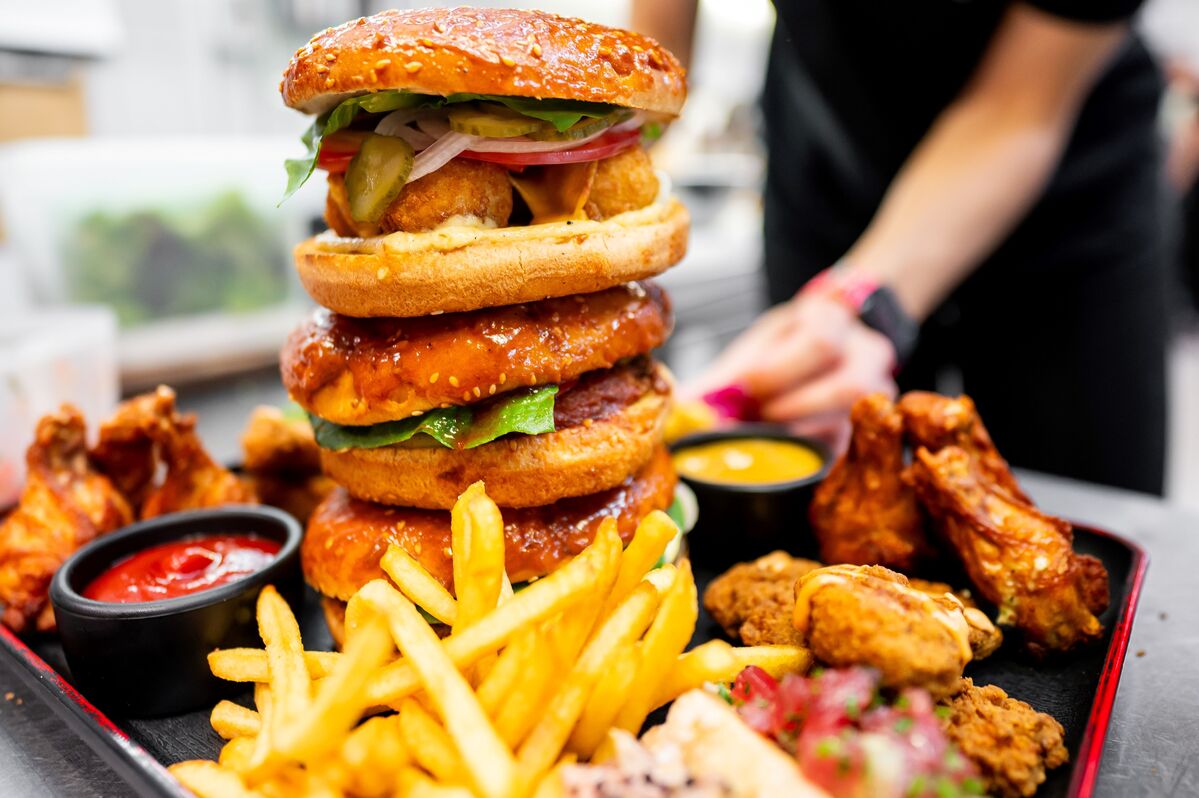Carters of Mosely, Birmingham: Small wonders
A series of snacks before a meal, such as those served by Brad Carter at Carters of Moseley in Birmingham, are a chef's calling card and a little taste of things to come, discovers Michael Raffael
At what point does a meal start? The Italian antipasto means "before the meal", and hors d'oeuvre translates as "outside the work". Both terms and their cousins amuse bouche (palate-tickler) and taster suggest treats before the proper eating starts.
âThis is what Iâm about,â they say. Yes, they accompany an aperitif, and, yes, they give the kitchen a breather while preparing the rest of the order. Diners think of them as freebies, but they arenât give-away extras â" they form an integral part of the whole experience. As such, they have to harmonise with the rest of the menu and sit comfortably in style, portion size and skill with whatâs to come. For the kitchen, too, they have to fit: how long do they take to prepare; how easy are they to serve; and how much do they cost?
Multi-course tasting menus may blur the distinction between introductory snacks and the meal proper. Brad Carter, at Carters of Moseley in Birmingham, operates a spread of set menus and serves four snacks as staggered mini-courses before the waiter puts the bread along with the in-house butter and âpig butterâ on the table.
Chicken liver cereal (or chestnut mushroom cereal) is the largest of the four snacks, about four teaspoonsâ worth; an Ogleshield gougère is one profiterole; Devon Manilla clam is a single mollusc; and Tamworth coppa is two
wafer-thin slices, weighing under 10g. The four snacks will change according to time of year and availability of ingredients, but the cost per head for the four is less than 60p.
Chicken liver cereal Makes 60 portions
Cost per serving: 10p
For the chicken liver 3 large banana shallots, sliced
400ml Madeira
200ml port
2 bay leaves
2 sprigs thyme
1 garlic clove, crushed
500g chicken livers (before trimming)
15g (approximately) pink salt
4 eggs
350g melted and cooled butter
Put the shallots, Madeira, port, herbs and garlic in a pan. Simmer slowly to cook the shallots and reduce the liquids â" about 90 minutes. Take out the thyme and bay leaves, and cool.
This makes about 200g. Remove all the sinew from the liver (about 100g weight loss). Put the liver and shallot reduction in a Thermomix and blend for three minutes at speed 7-8. Add the salt and eggs and blend for one
minute more. Pour the butter in through the lid and keep blending until all the mixture is smooth and emulsified.
Brush a sheet of film with oil and line a Le Creuset terrine with it, with the oil against the enamel sides. Pass the liver base into the terrine through a fine sieve. Pull up the sides of the film to prevent air pockets forming. Fit the lid on the terrine and then cook for 75 minutes in a combi-oven at 85°C. The parfait will be cooked but still soft and pipeable (for a slicing style of pâté, cook it for 15 minutes longer). Cool and then fill a piping bag with the mixture. Chill till needed, but bring up to room temperature during service.
For the cereal 60g goose fat
180g jumbo oats, sieved
300g sunflower seeds
200g linseed
50g cocoa nibs
Thyme leaves to taste
14g salt
50g sugar
100g seedless golden raisins
Preheat the goose fat on a large gastronorm tray. Combine all the other ingredients except for the raisins. Toss the mixture in the hot fat â" it should cover the tray in a thin layer. Bake for 21 minutes in a medium oven at 180°C. Add the raisins and put it back in the oven to bake for three minutes more. Cool and then store in a sealed container.
To serve (one portion) Pipe about 15g of the chicken liver parfait over the base of a small bowl and sprinkle a thin layer of the cereal on top. Serve with a teaspoon.
Tamworth coppa Carters cures its own coppa (neck of pork) and guanciale (pork cheek). The technique is more about measuring weight loss than a precise ratio of meat to other ingredients.
Portion size: approximately 10g
Cost per portion: 20p
1 seamed neck from a side of Tamworth pig
(900g-1.4kg)
Rock salt
150ml dry white wine
60g (approximately) black peppercorns, coarsely crushed
Massage the meat thoroughly with the rock salt. Leave it in a salt box with the salt around it for 24 hours. Take the joint out of its salt packaging and press with a weight for another 24 hours per kilo. Rinse off any salt left on the surface and dry it well. Wash the joint with the dry white wine and coat it with crushed pepper. Weigh the joint.
Then wrap it in layers of muslin and hang it from the ceiling in a well-aired room. Â
After a month, weigh the joint again to assess how much moisture has been lost. Continue to hang the meat until it has lost 30% of its original weight â" this normally takes about six weeks.
To serve, machine-carve two slices from the joint as thinly as possible (less than a millimetre), and serve. Note: bread with âpig butterâ, made from Tamworth pork dripping flavoured with confit onions, is often served with the coppa.Â
Ogleshield gougères
Ogleshield is a washed-rind cheese made from raw Jersey milk by the well-known Cheddar cheesemaker Jamie Montgomery. The recipe is similar to the Franco-Swiss raclette.
Makes about 52 portions (15g per portion)
Cost: 10p
250ml water
Salt
80g butter
100g flour
400g Ogleshield, grated
4 eggs
600g whipping cream
20g starch-stabiliser, eg Ultratex
Boil the water, salt and butter in a mediumsized (2l) pan. When the liquid foams up the sides of the pan, rain in the flour and beat until the dough becomes smooth. Beat in 150g of the cheese. Transfer to a bowl and beat in the eggs one by one (the classic choux paste recipe). Cool.
Pipe 52 buns onto a baking tray and bake for 30 minutes at 185°C. Cool and store. To make the sauce, heat the rest of the cheese and cream with a little salt, and beat in the stabiliser to thicken. Cool.
During service, reheat the gougères to order, slit the base with a pointed knife and pipe in a little Ogleshield sauce.Â
Devon Manilla clam 1kg clams
Lacto-fermented wild garlic and liquor
Pickled wild garlic buds
300ml hot turbot velouté (3 parts fumet,
1 part whipping cream)
3g lecithin
Makes about 30 portions (one clam per portion)
Cost per portion: 20p
Steam the clams for about two minutes to open. Strain the juice and reserve. Vacuum-pack the clam meat under medium pressure ahead of service.
Serve each clam portion on a bed of sterilised shells. Put about half a teaspoon of lactofermented wild garlic in a clam shell and lay a clam on top. Put a quarter-teaspoon of garlic buds on top of the clam. Dissolve the lecithin in the velouté, add the fermented wild garlic liquor to taste, the clam juice and the froth. Spoon a little over the clam and serve.
Brad Carter
Five year ago, Brad Carter and his wife Holly opened Carters of Moseley in a Birmingham suburb. He didnât have a single celebrity chefâs name on his CV. He dished up Welsh rarebit and they did afternoon teas. Last year, the couple won the Good Food Guideâs Restaurant of the Year and a Michelin star.
A former student of the year at University College Birmingham (as was his sous chef, brother-in-law Peter Jackson), he has avoided the copy-cat style of cooking that often characterises chefs who have worked their
way through famous brigades.
âIâm an all or nothing chef,â he says. âIâve done jobs that helped me develop and suited my career, rather than work for such-and-such a chef.â
Trusting his own judgement, he felt, has helped him to evolve organically and at his own pace. The first years at Carters, customers werenât queuing up, but that gave him time to refine ideas and hone recipes. Itâs only by trial and error, he argues, that creative cooks can improve: âAny chef who says he gets something right first time is a liar, because you donât.â
Instead of competing against an established dish by, say, Gordon Ramsay, Carter follows his own ideas about taste, texture and mouth-feel:
âDoes something deliver what Iâm trying to achieve? he asks. âIt doesnât bother me whether something is fashionable or not.â
Â



